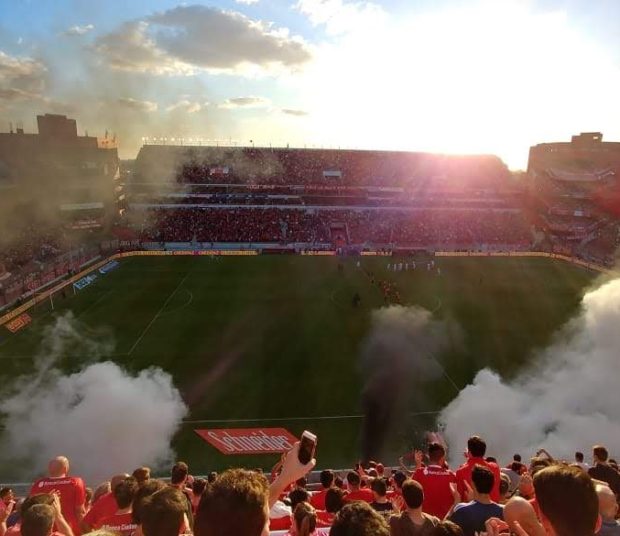


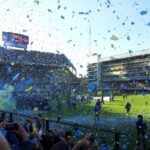
Argentina is one of the most football-obsessed countries on the planet, and nowhere is that more evident than in Buenos Aires. With an incredible 24 professional teams based in the capital alone, it’s the epicenter of Argentine football. Among these, five clubs stand above the rest in terms of history, success, and passionate fan bases — the legendary “Big Five.”
This guide breaks down the main teams to watch, including key rivalries like the Superclásico and the Clásico de Avellaneda, helping both new fans and seasoned followers of European football understand the culture and intensity of Argentina’s game.
Whenever any of the Big Five teams face off against one another whether it’s Boca vs. Racing, San Lorenzo vs. Independiente, or River vs. San Lorenzo it’s considered a clásico or derby. However particular match ups are extra special…
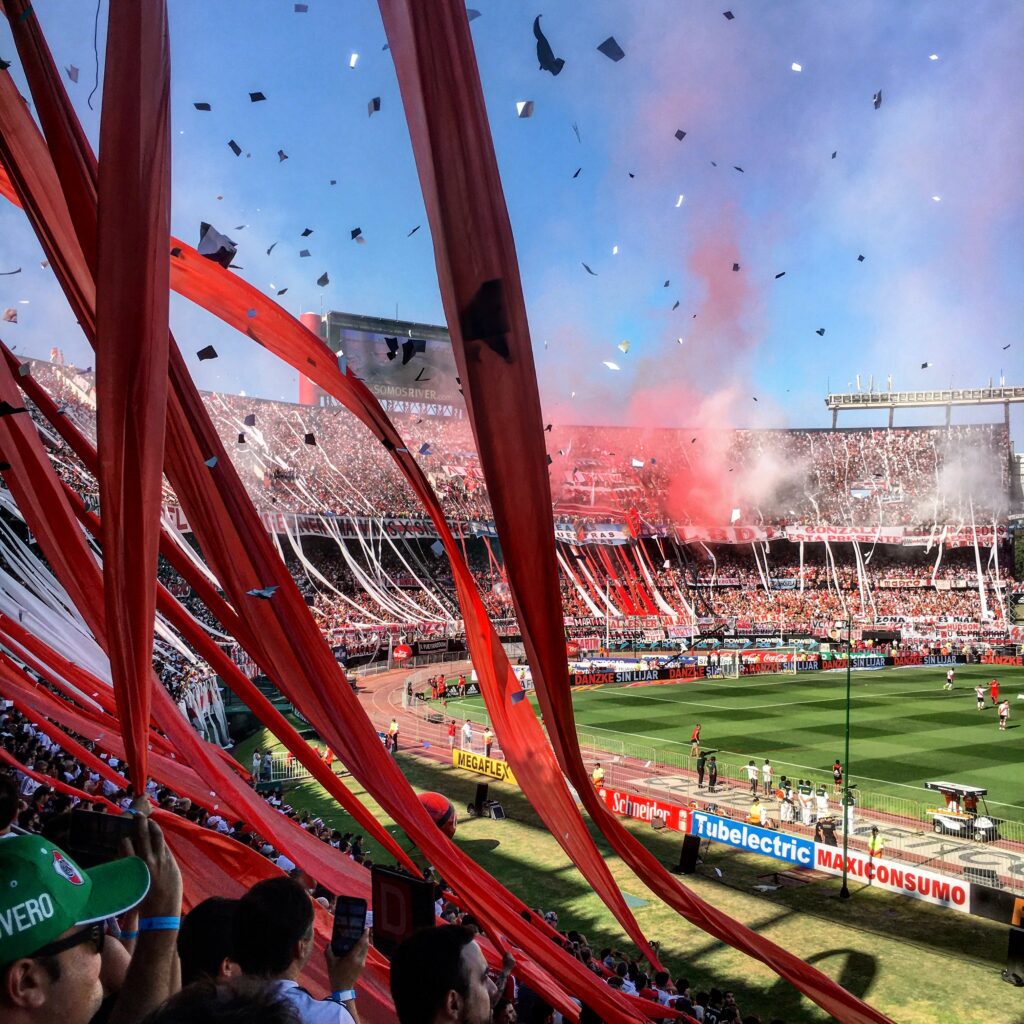
Founded in 1901 in the La Boca neighborhood (yes, coincidentally that Boca!), River Plate now play at El Monumental in Núñez, South America’s largest stadium and the national team’s home ground. Recently renovated ahead of the 2030 World Cup, it combines modern design with historic prestige. Known as Los Millonarios for their wealthy beginnings or big spending in the 1940s and ’50s, River have won a record 38 domestic league titles and 5 Copa Libertadores, including their iconic 2018 Superclásico win over Boca Juniors in Madrid.
Their fans are famously passionate, and the club has produced legends like Enzo Francescoli, Adolfo Pedernera and their current, decorated coach Marcelo Gallardo. In 2025, 17-year-old Franco Mastantuono has emerged as the club’s breakout star, dazzling with his left-footed creativity and drawing interest from major European clubs.
🐔The club’s nickname among rivals is Gallinas (chickens), referencing a supposed lack of courage.
Must-see match: El Superclásico (vs. Boca Juniors), hosted at El Monumental generally in March/April
👉 River Plate match tickets and packages
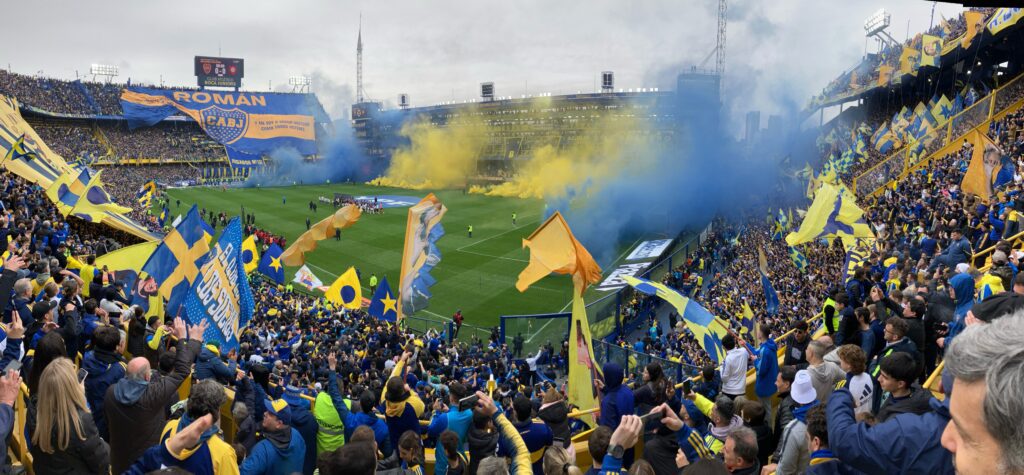
Founded in 1905, Boca Juniors still play in their original neighborhood, La Boca, at the iconic La Bombonera stadium. Known as Los Xeneizes (the Genovese), the club was founded by Italian immigrants and has become a symbol of working-class pride. With 6 Copa Libertadores and 18 international trophies, Boca are one of the most decorated clubs in global football history, and still remain a major continental force. In 2025, attacking midfielder Ezequiel Fernández has become a standout figure, praised for his vision and composure on the ball, drawing comparisons to past legends like the mercurial playmaker Juan Román Riquelme.
The all-time highest goal scorer in Boca’s history Martin Palermo, the controversial Carlos Tevez and some fella named Diego Maradona have all worn Boca’s blue and gold. Boca’s fans are among the loudest and most loyal in the world. Their ultras group, “La 12“, or the the team’s 12th player, were dubbed so due to their intensity, noise, and nonstop passion they bring to every home match.
💩The club’s nickname among rivals is bosteros (horse manure workers), referencing the previous occupants before the stadium was constructed.
Must-see match: El Superclásico (vs. River Plate), hosted at La Bombonera generally in October/November
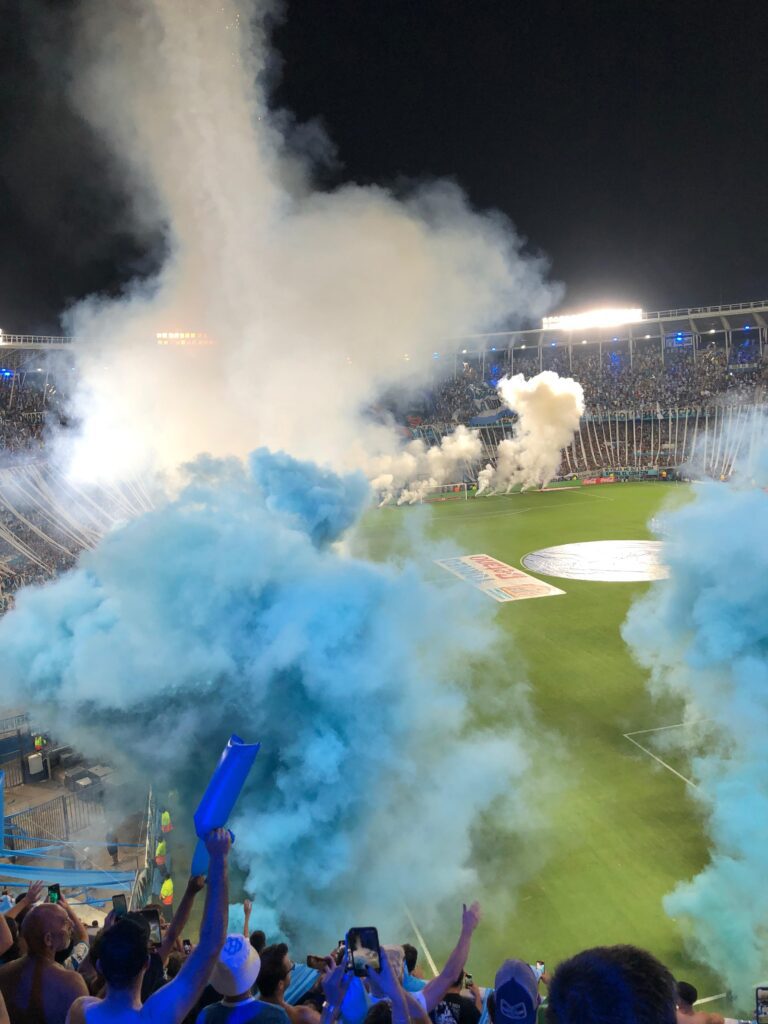
Based in Avellaneda, Racing were founded in 1903 and play in El Cilindro (or formally known as Estadio Presidente Juan Domingo Perón stadium). Known as La Academia for their prolific youth system, they dominated early 20th-century football with seven consecutive titles from 1913 to 1919. Racing’s fan base is among the most passionate in Argentina, with their ultra group La Guardia Imperial playing a central role in matchday culture filling the stadium with drums, banners, and nonstop chants that make the stadium rumble like few others.
They’ve won 17 league titles and one Copa Libertadores, and were the first Argentine club to win the Intercontinental Cup. Racing legends from the modern era include Diego Milito and Lisandro López both of whom returned from successful European careers to win titles and inspire the new generation. In recent years, the club has developed standout talents like Carlos Alcaraz, now playing in Europe, and 2025 prospect Tomás Avilés, a promising defender with strong leadership skills.
🤕Racing Club has a recent unfortunate history of falling short of winning titles. Their self deprecating fans tend to refer to themselves as “those who like to suffer”.
Must-see match: Clásico de Avellaneda (vs. Independiente)
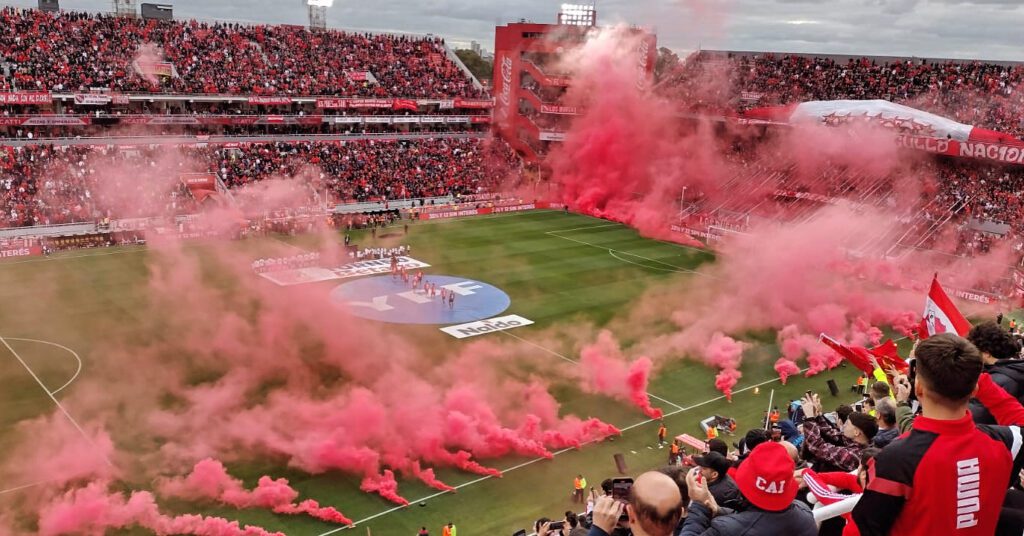
Founded in 1905, also Avellaneda based Independiente hold a record 7 Copa Libertadores titles, earning them the nickname Rey de Copas (King of Cups). Known as El Rojo or Los Diablos Rojos, they play in the Estadio Libertadores de América ( or commonly known as La Doble Visera), one of the most modern stadiums in South America. The club’s passionate fans rally behind their ultras group, Los Diablos, whose red smoke, chants, and intense displays create an intimidating matchday atmosphere. In 2025, attacking midfielder Santiago Hidalgo has emerged as a rising star, offering hope for a return to domestic success.
Club legends include Arsenio Erico, Ricardo Bochini, and Sergio Agüero. The transfer fees from Agüero’s move to Atlético Madrid, to Manchester City and finally Barcelona paved the way for a significant portion of the stadium’s renovations. Although their domestic form has varied in recent years, their international pedigree is unmatched.
😒Arch rival Racing Club fans tend to dub the Independiente fans amargos or bitter ones.
Must-see match: Clásico de Avellaneda (vs. Racing Club)
Bonus: Racing Club and Independiente’s stadiums are both in Avellaneda a mere 200 meters apart!
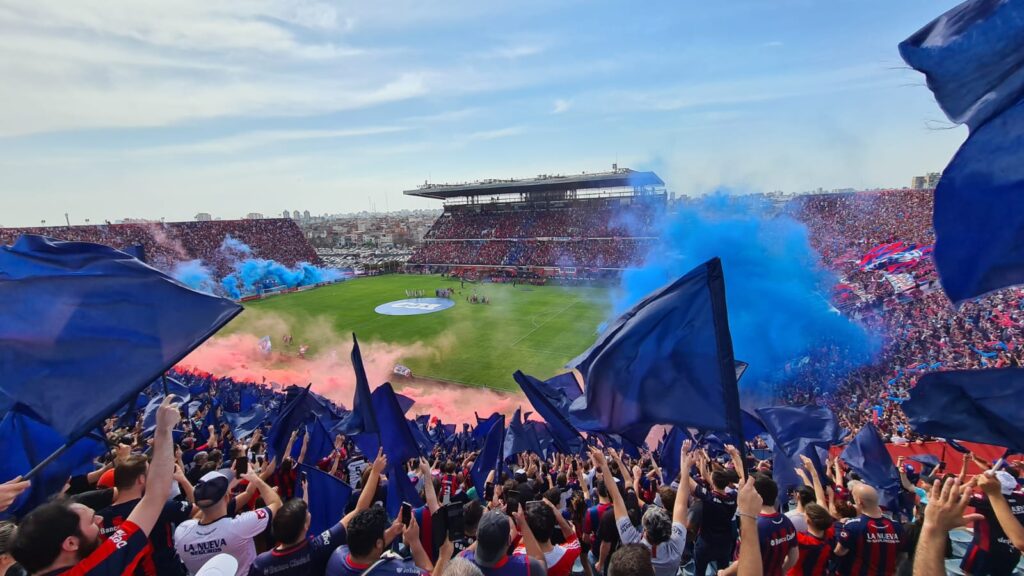
San Lorenzo, founded in 1908, are based in Bajo Flores and play at El Nuevo Gasómetro, officially named Estadio Pedro Bidegain. The nickname pays tribute to the club’s historic former ground, El Viejo Gasómetro, in Boedo. Once mocked for never winning a Copa Libertadores, they finally triumphed in 2014 distancing themselves from the unfortunate nick name Club Atletico Sin Libertadores de America (clever word play off of their club initials C.A.S.L.A.).
They’ve won 15 domestic titles and are known as El Ciclón (The Cyclone), with fans nicknamed Los Cuervos (The Crows). Their ultras group, La Gloriosa Butteler, fuels the atmosphere at El Nuevo Gasómetro and are known for the most creative chants and song in South America. In 2025, forward Agustín Giay has emerged as a standout talent, praised for his energy and attacking versatility.
Past stars include José Sanfilippo, Leandro Romagnoli, and Néstor Gorosito, all of whom played pivotal roles in shaping the club’s legacy. The club has a unique identity with some very high-profile supporters like recently deceased Pope Francis and actor Viggo Mortensen or Aragon from LOTR fame.
Must-see match: El Clásico Porteño a.k.a. Clásico de Barrio (vs. Huracán)
Vélez Sarsfield, based in the Liniers neighborhood of Buenos Aires, play at El Fortín (The Little Fortress), officially known as Estadio José Amalfitani. The club gained prominence in recent years, especially the 1990s. They’ve won multiple league titles and a Copa Libertadores in 1994 under legendary coach Carlos Bianchi. (Many of my fellow Americans here cannot help but notice a strong resemblance to Larry David!
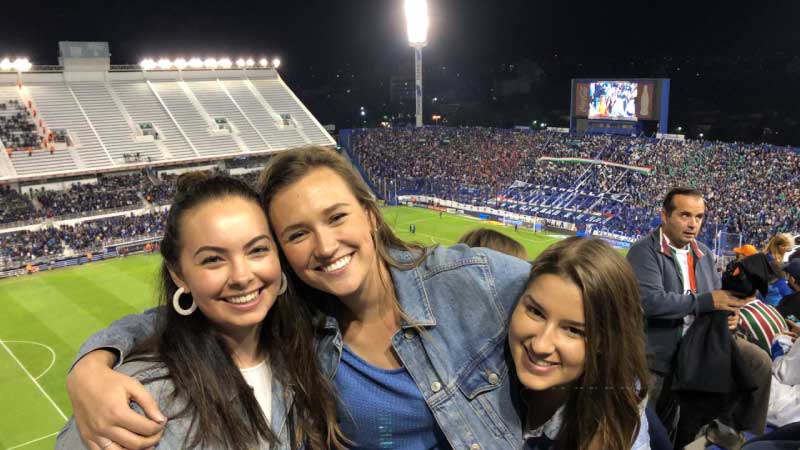
While Vélez doesn’t have the massive fan base of the Big Five, they’re respected as one of Argentina’s best-run clubs. Their supporters, La Pandilla de Liniers, brings a loyal and spirited presence to home games. In 2025, attacking midfielder Gianluca Prestianni has emerged as a breakout star, drawing attention from European clubs for his technical flair and creativity.
😴Rival fans often refer to Velez as “sin hinchada” or a club with no fans. Their large stadium that tends to be used for international concerts is tough to fill unless playing a big game.
Bitter rivals of San Lorenzo, Huracán play at El Palacio in Parque Patricios. Their balloon crest and the nickname El Globo reference famed Argentine hot air balloon aviator Jorge Newbery.
The stadium last updated in 1977 making it classically old school one of the most authentically ‘barrio‘ football experiences in Buenos Aires.
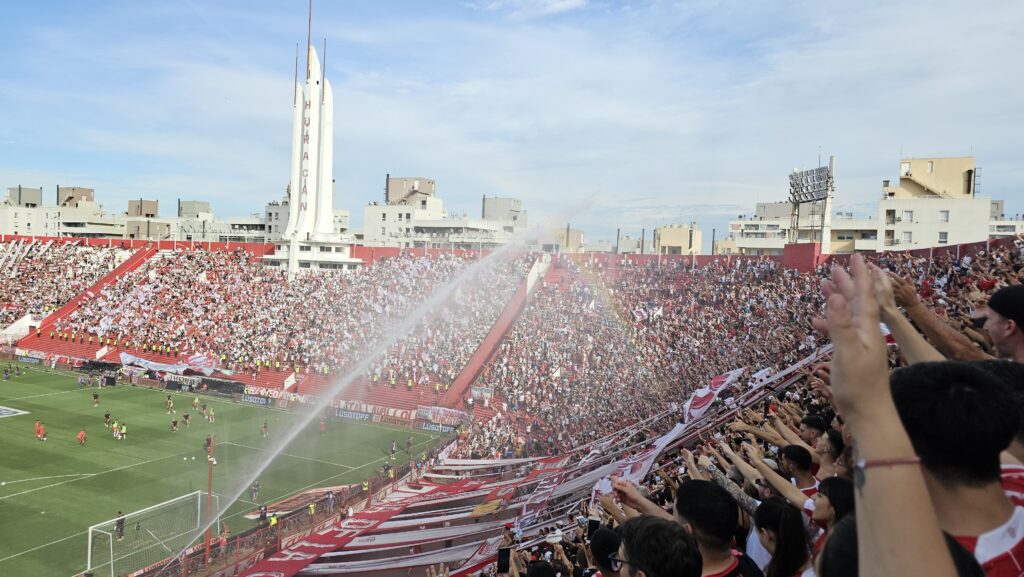
🔥Dubbed Quemeros by rivals fans, a nickname drawing from the neighborhood’s old garbage incinerator, many fans have embraced the nickname.
👻 A more modern insult would be calling them los fantasmas (the ghosts), suggesting their presence is barely felt.
Famous for developing Diego Maradona, Argentinos play in Estadio Diego Armando Maradona in Buenos Aires’ La Paternal. Another great local barrio like team, their matches are among the most accessible in the city. Great for an add on game while visiting Argentina in addition to one of the larger clubs.
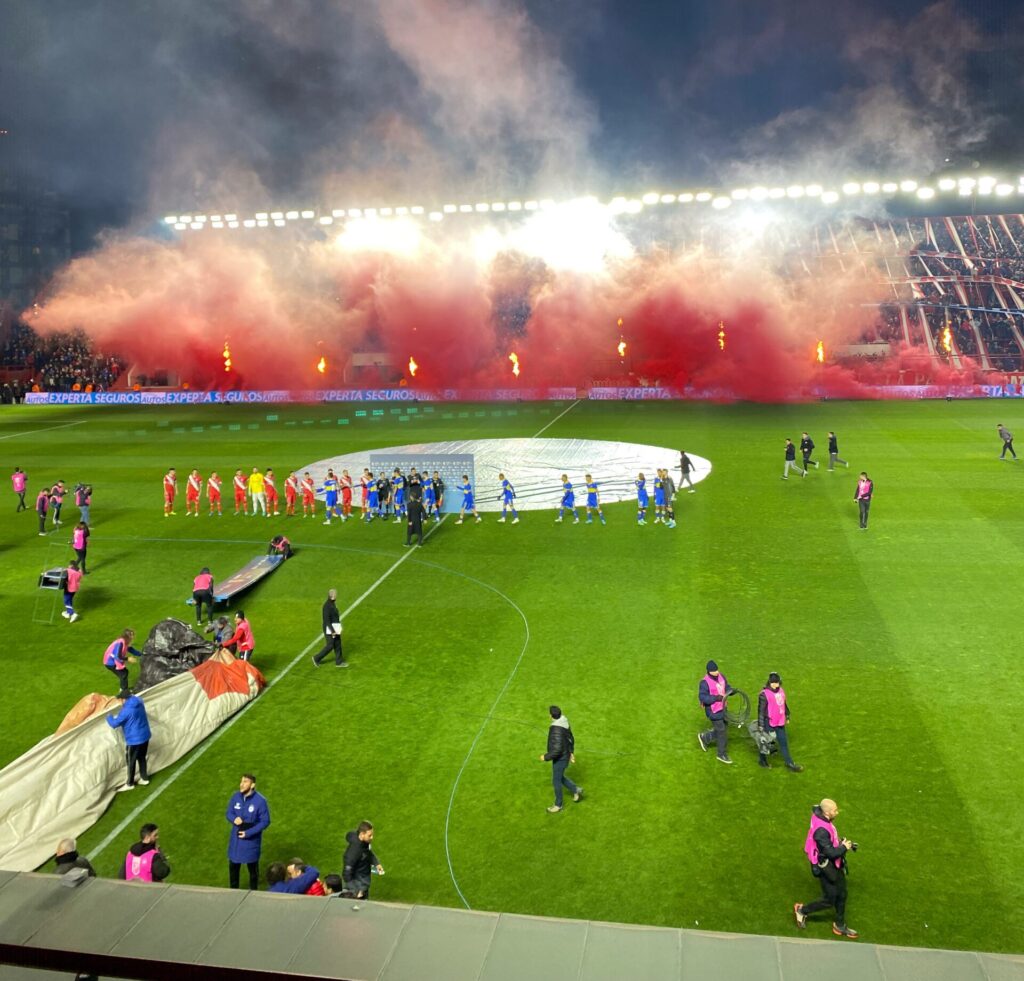
Whether you’re looking for a Superclásico showdown or a local derby with authentic vibes, we offer guided football experiences with bilingual guides, transportation, and insider access.
👉 How to get soccer tickets in Buenos Aires
Or contact us directly at LandingPadBA@gmail.com for custom packages and local insights.
(US) 910 795 2992
(AR) +54 9 11 —- —-
©Copyright 2025 Landingpadba, LLC